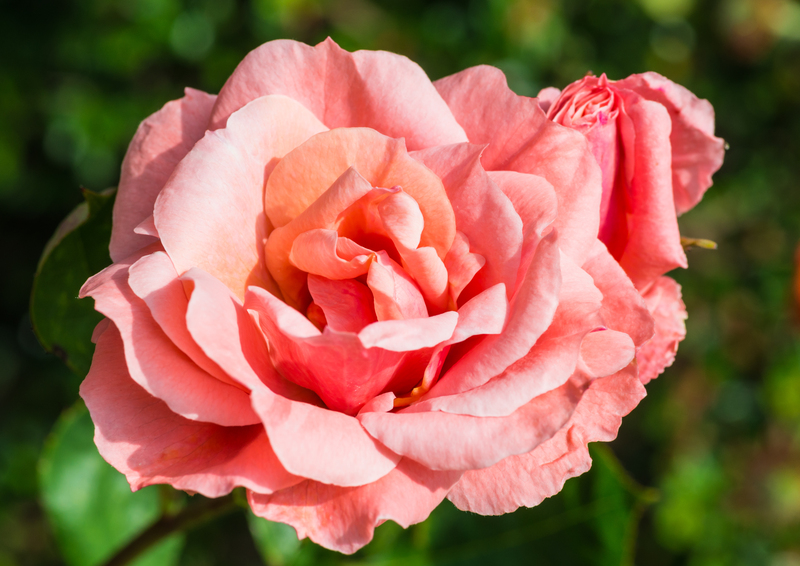Expert Tips for Managing Windy Environments in Gardens
Posted on 22/08/2025
Expert Tips for Managing Windy Environments in Gardens
Windy environments can pose significant challenges for gardeners, from damaging delicate plants to drying out soil rapidly. However, with the right strategies, you can transform your windy garden into a lush, thriving oasis. In this comprehensive guide, we'll share proven expert tips for managing windy environments in gardens, ensuring your outdoor space can withstand the strongest gusts and flourish year round.

Why Is Wind a Problem in Gardens?
Before diving into practical solutions, it's helpful to understand how wind impacts gardens. Wind can:
- Break and damage plant stems, branches, and flowers
- Increase rates of water evaporation, leading to drought stress
- Disturb pollinators and beneficial insects
- Cause soil erosion and remove vital topsoil nutrients
Successfully gardening in windy conditions requires a strategic approach, combining thoughtful plant selection, clever landscaping, and effective windbreaks.
1. Assess Your Garden's Exposure to Wind
Begin your journey by assessing how and where wind moves in your yard. Observe:
- The direction and strength of prevailing winds at different times of day
- Areas most exposed versus those naturally sheltered by fences or buildings
- Seasonal variations in wind strength
This information will guide your garden design and help you prioritize vulnerable spots for protection.
2. Design Effective Windbreaks
Utilizing Natural and Artificial Windbreaks
Windbreaks are vital in reducing the destructive force of winds. Effective windbreaks:
- Block, filter, or redirect wind currents
- Create microclimates that protect plants from extreme exposure
Windbreaks can be both natural and artificial:
- Natural Windbreaks: Rows of hedges, dense shrubs, or closely planted trees. Native evergreen trees and hardy, bushy shrubs work particularly well.
- Artificial Windbreaks: Fences (especially slatted fencing), trellises with climbers, or specially designed windbreak netting.
Remember, a windbreak should be semi-permeable, allowing some wind to pass through. Solid barriers can create uncomfortable turbulence on the leeward side, while filtered barriers slow wind without causing eddying effects.
Choosing the Best Plants for Living Windbreaks
- Evergreens: Such as Pine, Holly, Yew, or Juniper. These provide year-round protection.
- Deciduous Hedges: Like Hawthorn, Hornbeam, or Privet.
- Dense, Fast-Growing Shrubs: Examples include Escallonia and Elaeagnus.
Plant your windbreaks so the bottom branches remain full, blocking wind at soil level where young plants are most vulnerable.
3. Smart Plant Selection
Opt for Wind-Tolerant Species
Not all plants are created equal when it comes to wind resistance. For gardening in windy areas, select species that are:
- Flexible and resilient, such as ornamental grasses, lavender, and rosemary
- Low-growing, reducing the surface area exposed to wind
- Silver-leaved or hairy-leaved, as these adaptations often signal drought and wind resistance
Excellent choices for windy gardens include:
- Lamb's Ear (Stachys byzantina)
- Sea Holly (Eryngium)
- Russian Sage (Perovskia atriplicifolia)
- Artemisia varieties
- Miscanthus and other ornamental grasses
- Succulents and Mediterranean plants
Support Delicate Plants
For must-have statement plants that aren't naturally wind-hardy, use plant supports:
- Stakes and cages for tall flowers and vegetables
- Trellises for climbers (secure them firmly!)
- Ring supports for bushy perennials
4. Garden Layout Techniques to Combat Wind
Stagger Plant Heights and Groupings
Avoid planting in straight lines, as these can channel wind currents and increase damage. Instead:
- Stagger rows and create clusters for group strength
- Use taller, wind-tolerant plants as buffers for more sensitive varieties
- Arrange beds to maximize protection, especially for vegetable patches and tender plants
Sunken and Raised Beds
Sunken beds--planting slightly below ground level--provides extra shelter from blustery winds, especially for seedlings. Raised beds can be edged with windbreak materials or sturdy bushes for added protection.
5. Soil Management in Windy Conditions
Prevent Soil Erosion and Dryness
Windy environments cause rapid moisture loss and can strip away topsoil. To combat this:
- Apply mulch generously to all beds and borders--straw, bark, compost, or gravel preserve soil moisture and shield the earth from direct wind
- Grow ground covers, such as creeping thyme or low sedums, to anchor soil in exposed areas
- Use windbreak matting or biodegradable coverings on exposed slopes
Watering Strategies
- Water early in the morning or late evening to minimize evaporation
- Invest in drip-irrigation or soaker hoses for targeted, root-level moisture
- Regularly check soil moisture--wind can dry the surface rapidly even after rain
6. Container Gardening in Windy Areas
Many gardeners in windy regions opt for container gardening, which allows flexibility and protection.
- Choose heavy or wide-based pots that won't tip over easily; terracotta and cement are good options
- Avoid tall containers with a high center of gravity
- Group pots together for mutual shelter and use walls or windbreaks as backdrops
- Secure containers with weights if needed and avoid placing them on high, exposed platforms
7. Maintenance Routines for Windy Gardens
Regular Inspections and Repairs
In windy garden environments, vigilance is key. Make it a habit to:
- Check and replace ties, stakes, and supports after storms
- Inspect for snapped branches or wind-burnt foliage
- Prune dead, damaged, or crossing branches to prevent further breakage
- Replenish mulch after significant winds
Pruning Techniques
- Thin crowns of trees and bushes to reduce wind resistance and let air flow through gently
- Remove dense inner branches that could become sail-like obstacles
Proper pruning both fortifies plants and reduces the risk of wind damage during storms.
8. Creative Small-Scale Wind Protection Ideas
Sometimes, you don't need full-scale windbreaks--just clever, quick solutions:
- Temporary burlap screens or garden fleece can shield new seedlings
- Repurpose garden furniture or decorative screens as wind buffers for vulnerable plants
- Use straw bales or stacked stones as mini-barriers
These tactics are especially useful in vegetable gardens or while establishing young plants.
9. Adapting to Changing Conditions
Climate and wind patterns evolve--make your garden plan adaptable:
- Regularly review windbreaks and move portable screens as needed
- Opt for flexible planting plans and be prepared to swap out plants that consistently struggle
- Experiment with new wind-resistant garden design ideas and materials each season

10. Additional Tips for Managing Windy Gardens
- Install water features--besides being beautiful, small ponds or fountains can help humidify dry, windy microclimates
- Use climbing plants (like honeysuckle or clematis) on trellises to create living screens
- Rotate crops in vegetable beds to give fragile plants a break from wind exposure
- Plant evergreen or dense hedging at strategic angles based on seasonal wind movements
Conclusion: Creating Resilient Gardens in Windy Environments
Managing windy environments in gardens takes planning, observation, and a willingness to experiment. Use a combination of windbreaks, resilient planting, protective layouts, and ongoing maintenance to build a robust, beautiful garden--even in the face of persistent breezes. By incorporating these professional tips, you'll foster a landscape that not only survives but thrives in challenging conditions. Your wind-resistant garden can become a haven not just for plants, but for people and pollinators alike.
Remember: The key to success lies in observation, adaptation, and perseverance. With time, your garden will stand strong, whatever the weather brings!



